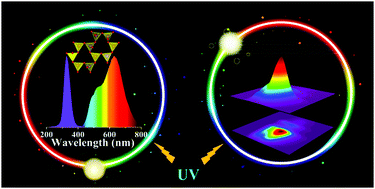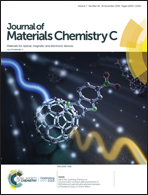A strategy for developing thermal-quenching-resistant emission and super-long persistent luminescence in BaGa2O4:Bi3+†
Abstract
We report a novel orange-emitting phosphor BaGa2O4:0.02Bi3+ with ultra-broadband emission and a large Stokes shift (1.88 eV). Its crystal structure, photoluminescence (PL) spectra, thermoluminescence (TL) spectra and long persistent luminescence (LPL) were investigated. The Bi3+ emission centers located at different six-membered rings are responsible for the asymmetric broadband PL spectra peaking at 638 nm. The integrated PL intensity of the phosphor at 200 °C still maintains 93.6%, 88.1% and 174.0% of the one at room temperature upon 310, 325 and 365 nm excitation due to the compensating emission losses of the phosphor with increasing temperature. Also, commendable LPL can be observed by the naked eye for 7 days and detected using a spectrofluorometer for 25 days in the dark after the stoppage of the 254 nm excitation. Both the unusual resistance to thermal quenching and super long LPL properties rely on the capture and release processes of the charge carriers in the traps. Finally, a white light emitting diode (WLED) with high Ra(>90) was obtained by combining the BaGa2O4:0.02Bi3+ phosphor with a UV-LED chip. Our concept of exploiting phosphors may open a gateway for discovering new multifunctional phosphors with excellent PL and LPL properties.



 Please wait while we load your content...
Please wait while we load your content...